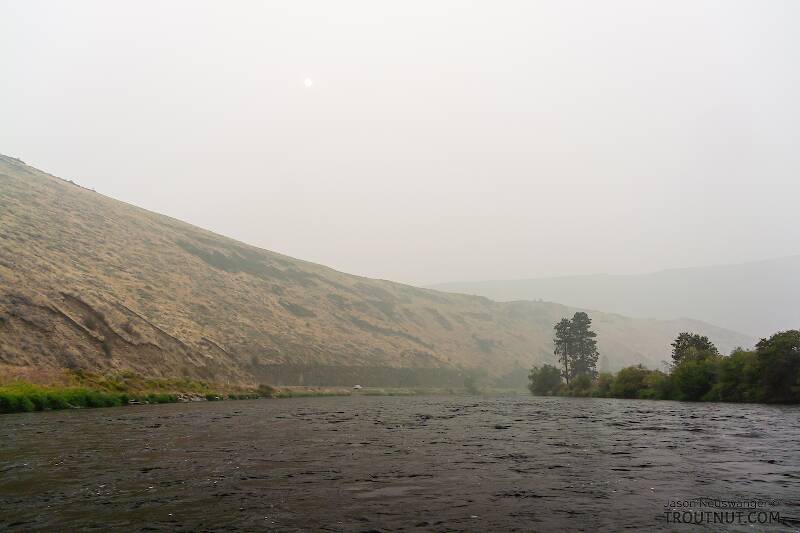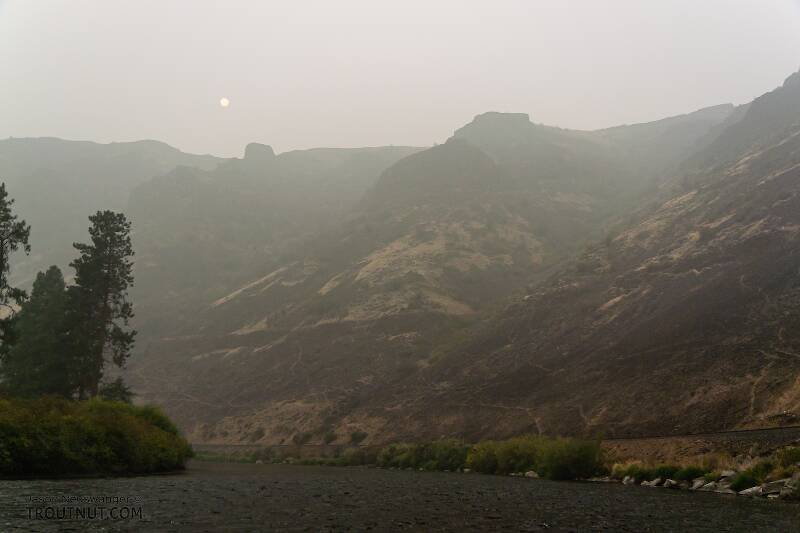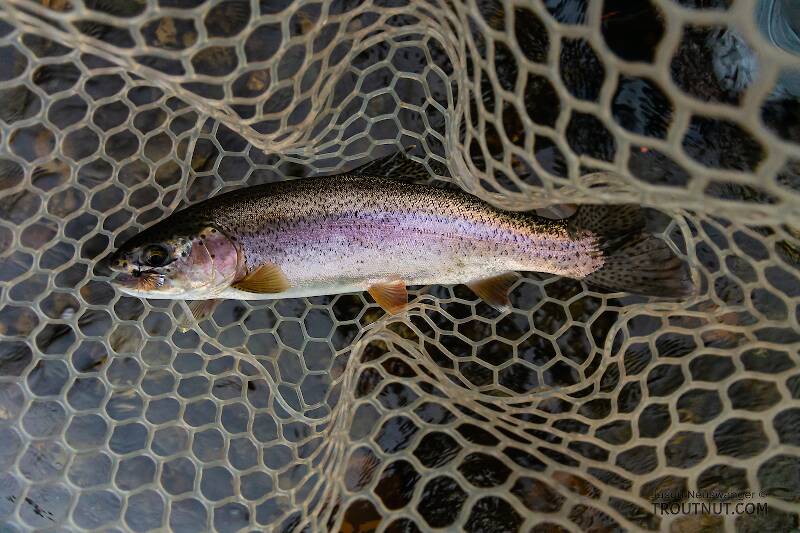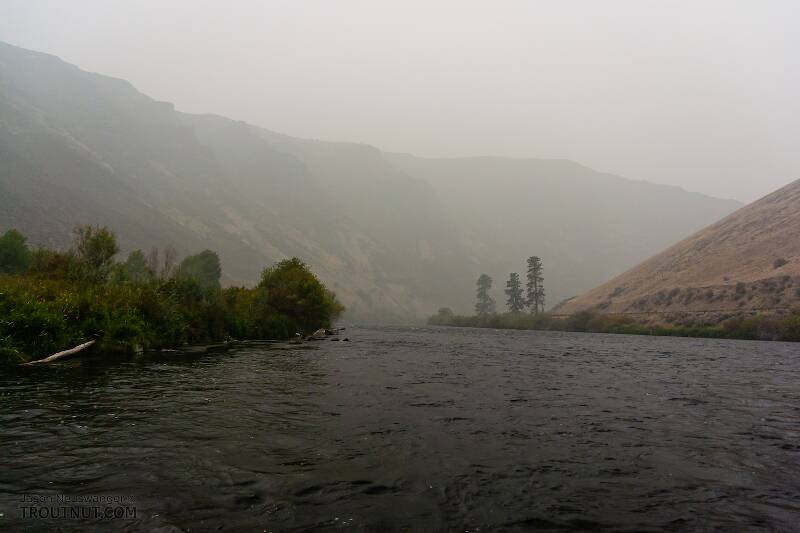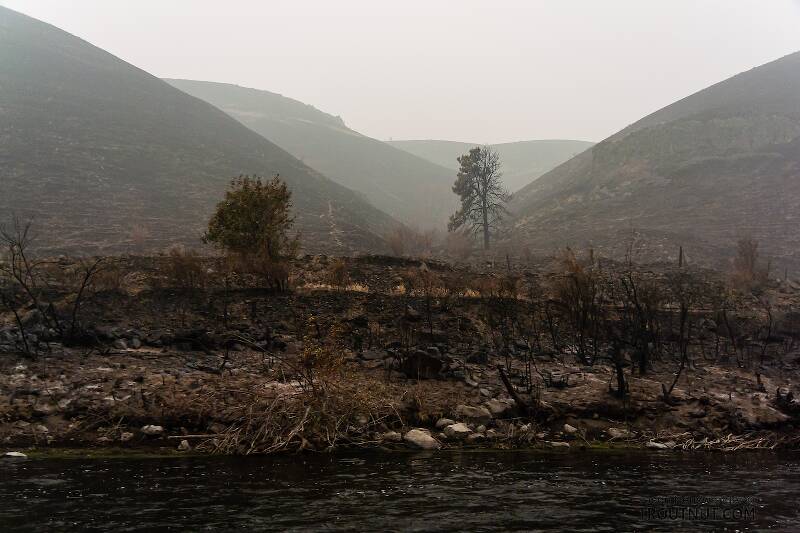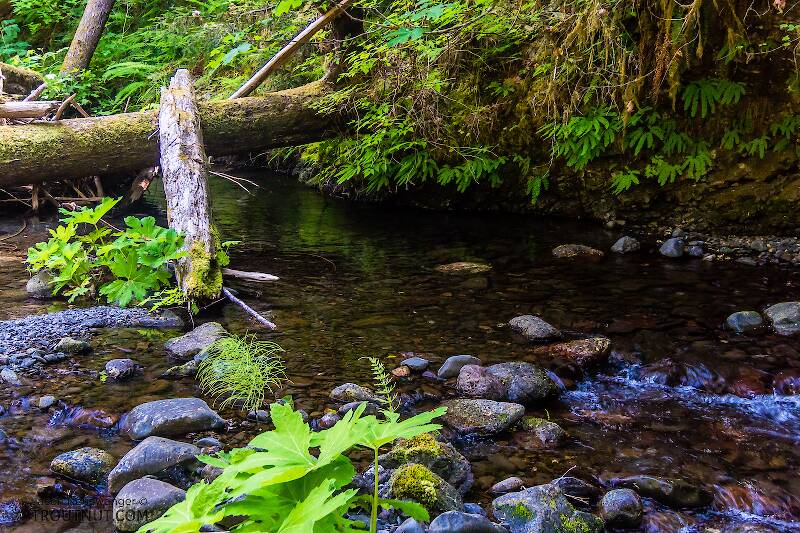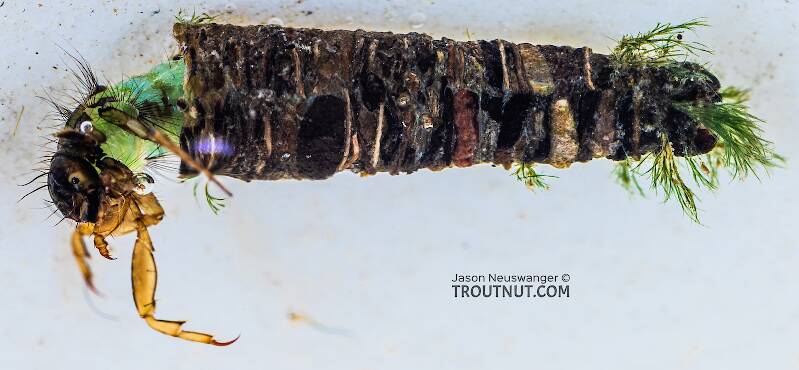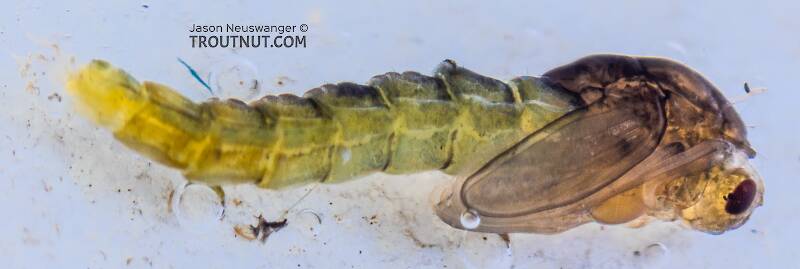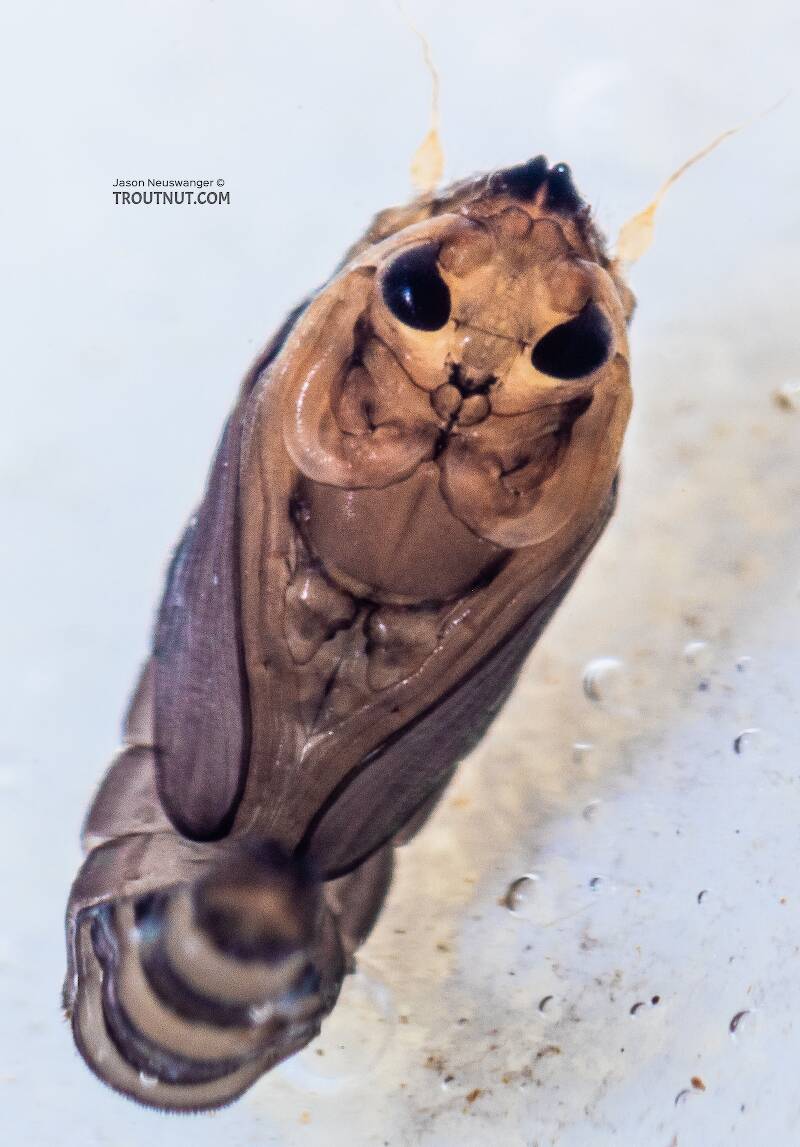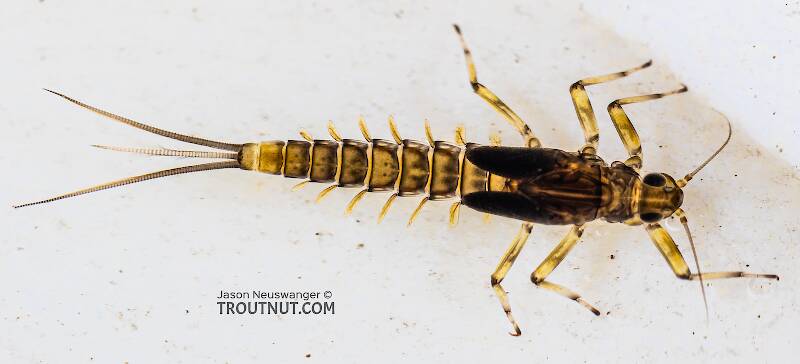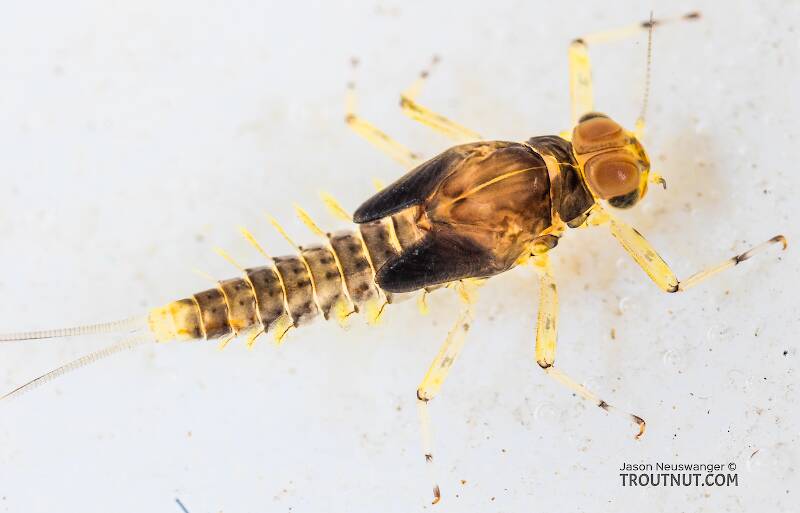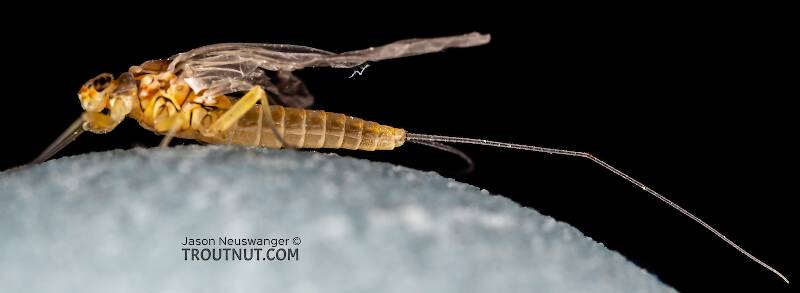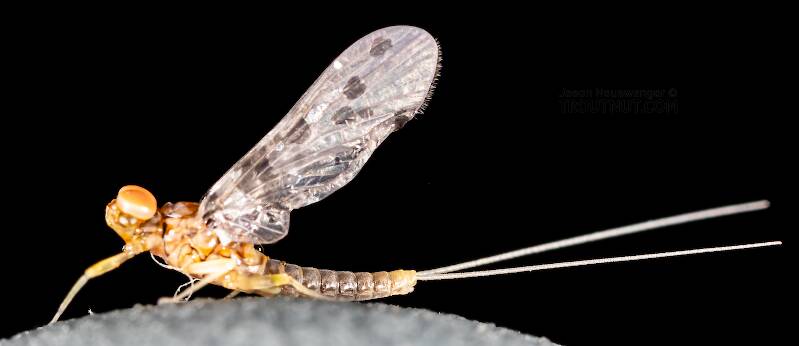
Salmonflies
Pteronarcys californica
The giant Salmonflies of the Western mountains are legendary for their proclivity to elicit consistent dry-fly action and ferocious strikes.
Featured on the forum

This one was surprisingly straightforward to identify. The lack of a sclerite at the base of the lateral hump narrows the field quite a bit, and the other options followed fairly obvious characteristics to Clostoeca, which only has one species, Clostoeca disjuncta.

Troutnut is a project started in 2003 by salmonid ecologist Jason "Troutnut" Neuswanger to help anglers and
fly tyers unabashedly embrace the entomological side of the sport. Learn more about Troutnut or
support the project for an enhanced experience here.
Quick morning at the South Fork Boise
By Troutnut on October 13th, 2020
On the way home from deer hunting somewhere in Idaho, I had just a couple hours to check out the South Fork Boise River. I drove up and down the canyon for a bit, looking at the water, trying to decide where to stop to fish. Eventually I found some fish rising to some little Baetid duns, and I waded into a bouldery tailout to try for them. They stopped rising pretty quickly, so I switched to my Euro nymphing rig. I hooked two nice rainbows in quick succession, landing a snaky, geriatric-looking 19.5" rainbow and losing one that was a bit shorter but a lot stronger.
Photos by Troutnut from the South Fork Boise River in Idaho
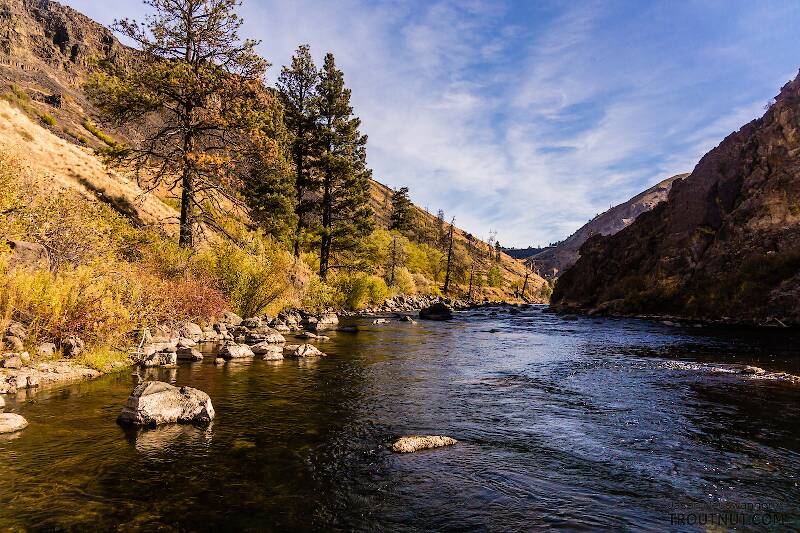
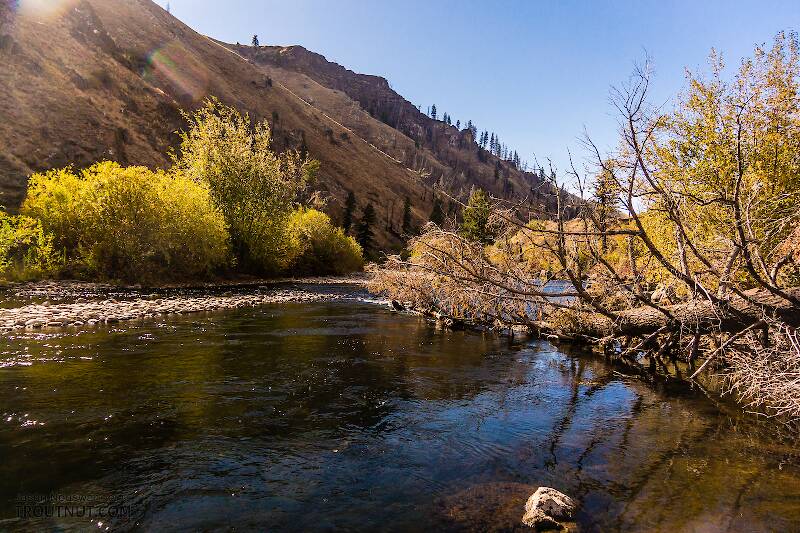
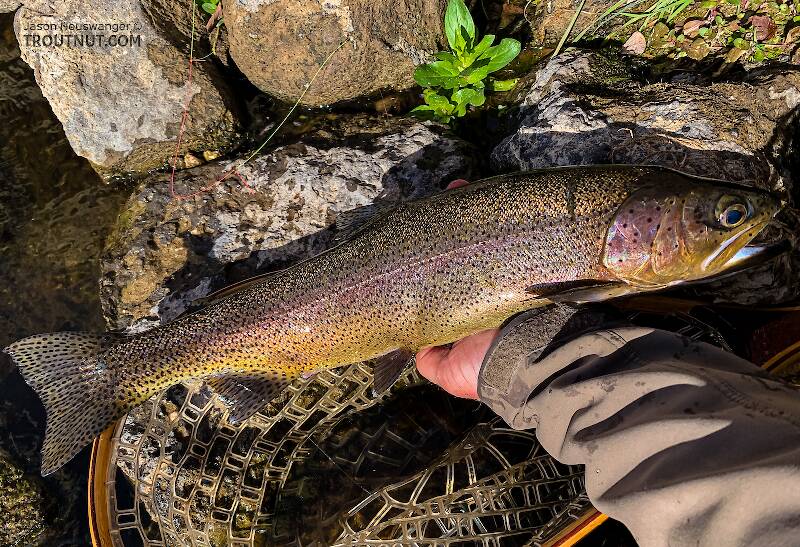
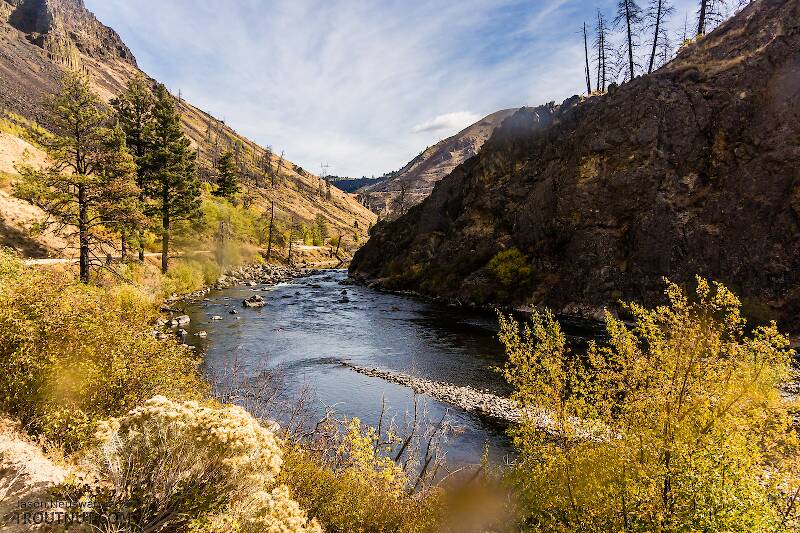
Dinking around on a small stream
By Troutnut on September 28th, 2020
On September 29th I went up to the mountains to sight in my hunting rifle in advance of deer season. However, the custom ammunition I ordered was the wrong length and wouldn't fit into the chamber, so that job ended quickly. (I won't name the company, because they bent over backward to make it right, and I got it fixed by hunting season.) As a consolation prize to make the trip productive, I drove to a nearby stream and played with the colorful little rainbows and cutthroat trout on perdigon nymphs. As a bonus, I caught a striking and unusual species of Siphlonurus mayfly.
Photos by Troutnut from Mystery Creek #249 in Washington
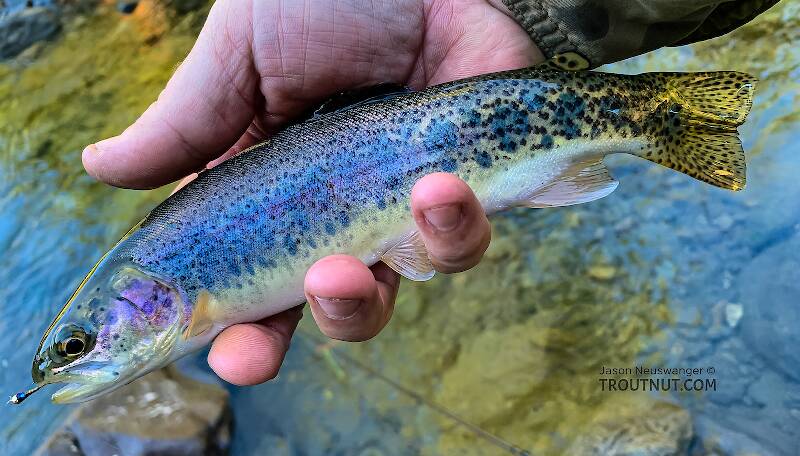
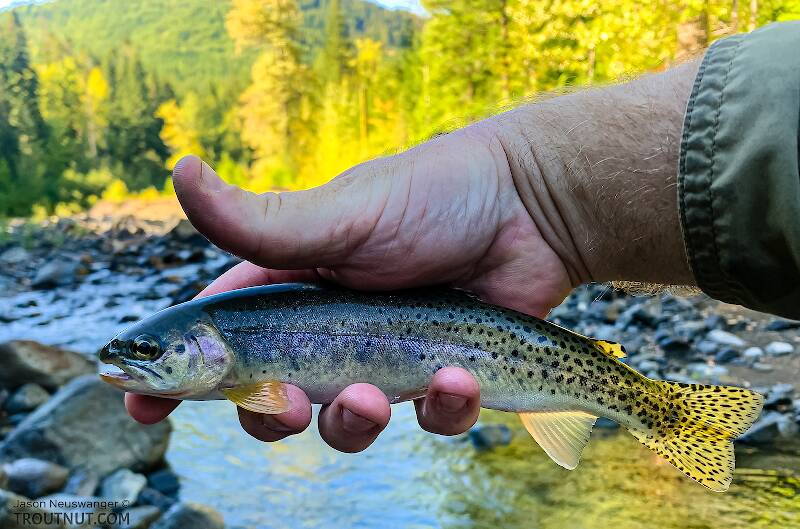
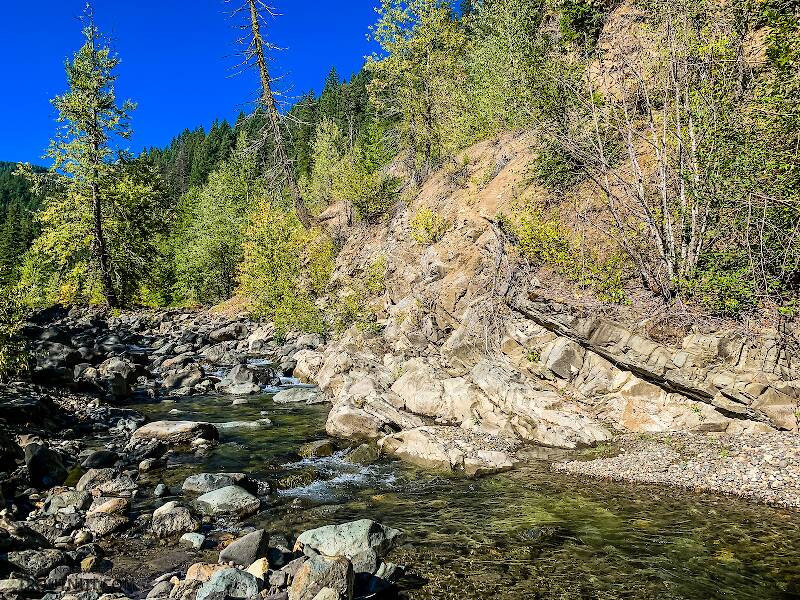


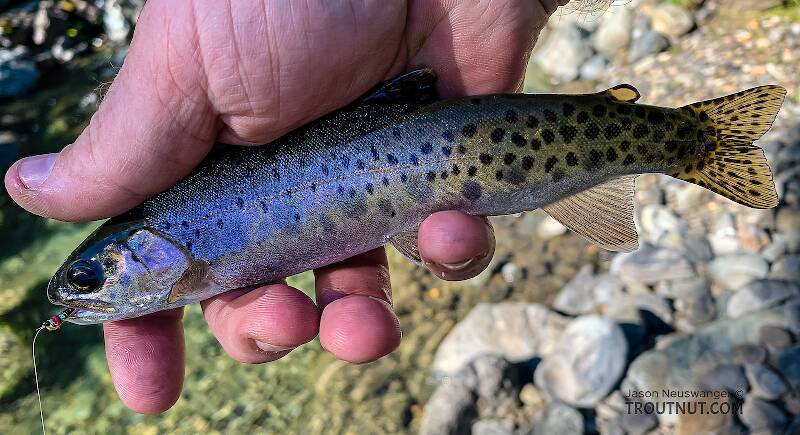
Closeup insects by Troutnut from Mystery Creek #249 in Washington
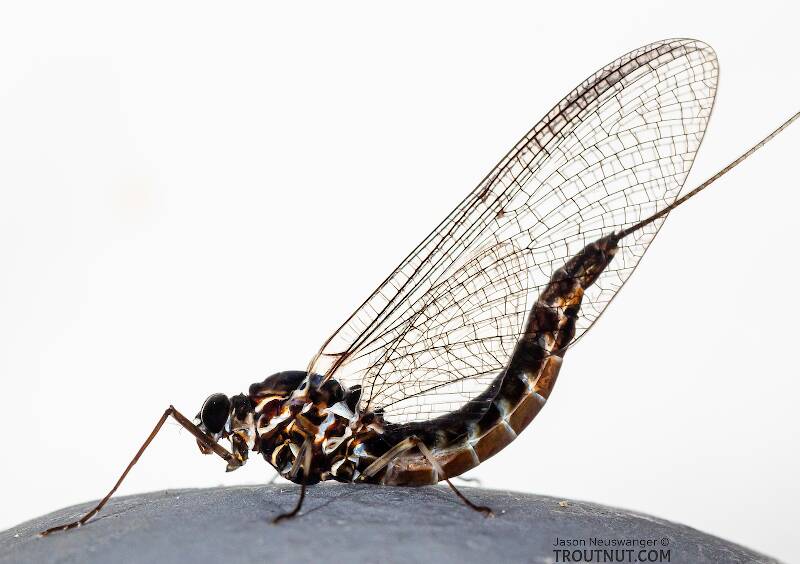
I found this specimen and saw a few more of its kind during midday on a small, steep, rocky creek fairly high in the Cascades, different from the previously reported habitats of its species.
Boulder-hopping on the Middle Fork of the Snoqualmie
By Troutnut on September 21st, 2020
I wanted to get out one fishing and hone my fledgling Euro nymphing skills one more time before today's major beginning to the fall rainy season, so last night I drove way up the Middle Fork of the Snoqualmie to fish a section of fast pocket water for a couple hours.
Working my way up the line of slippery car-sized boulders and fallen trees that comprise the river bank, sandwiched between the roaring whitewater and impenetrable vegetation, was as much an exercise in gymnastics as in fishing. However, I found plenty of what I came for: interesting nymphing water and very pretty, very small coastal cutthroat and rainbow trout. The largest of the couple dozen fish landed were a pair of 9-inch cutthroat. I could have found slightly bigger fish downstream closer to town, but the seclusion of the headwaters was worth the extra drive.
Working my way up the line of slippery car-sized boulders and fallen trees that comprise the river bank, sandwiched between the roaring whitewater and impenetrable vegetation, was as much an exercise in gymnastics as in fishing. However, I found plenty of what I came for: interesting nymphing water and very pretty, very small coastal cutthroat and rainbow trout. The largest of the couple dozen fish landed were a pair of 9-inch cutthroat. I could have found slightly bigger fish downstream closer to town, but the seclusion of the headwaters was worth the extra drive.
Photos by Troutnut from the Middle Fork Snoqualmie River in Washington
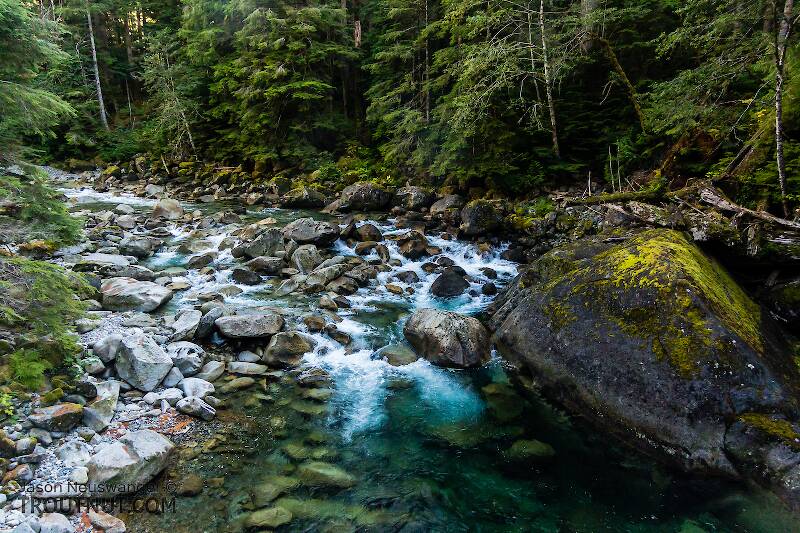
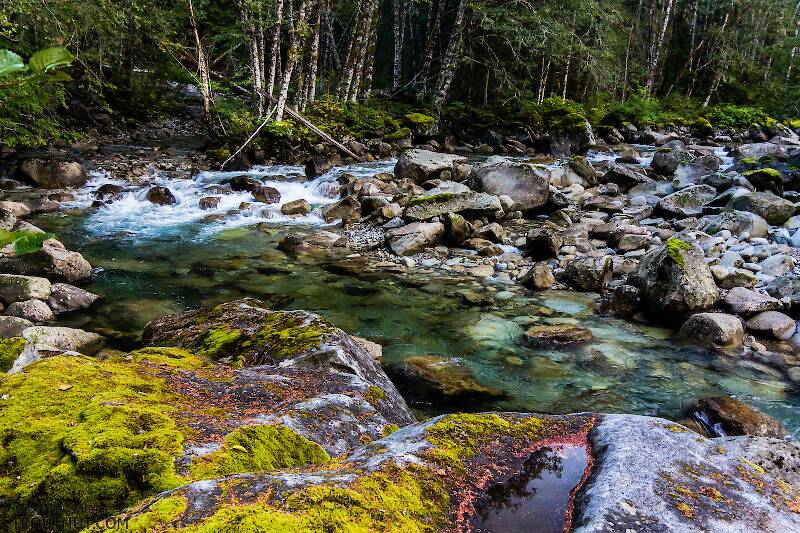
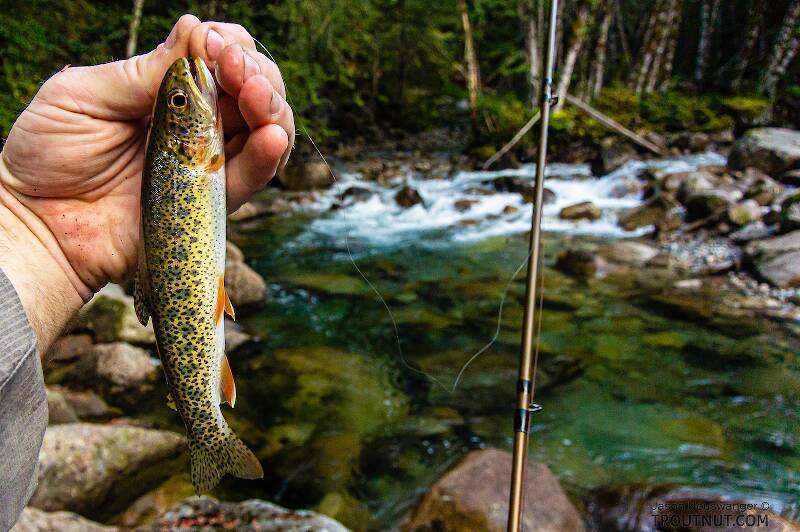
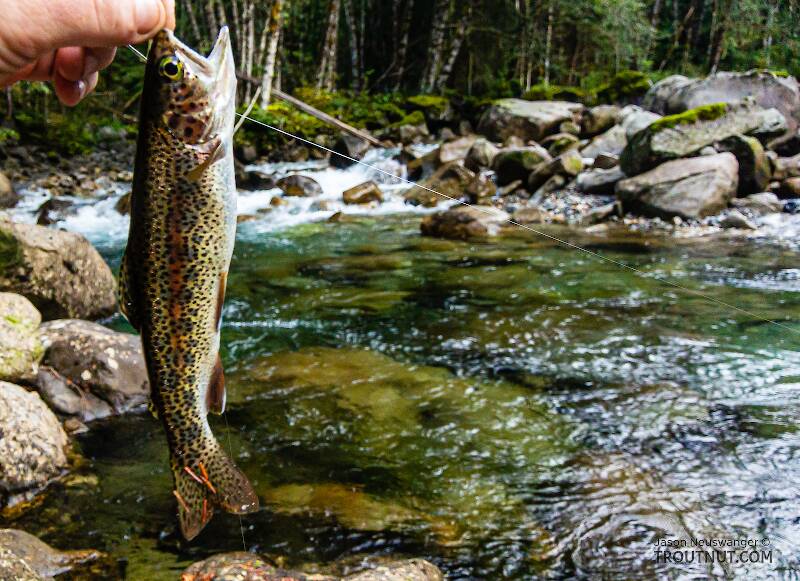
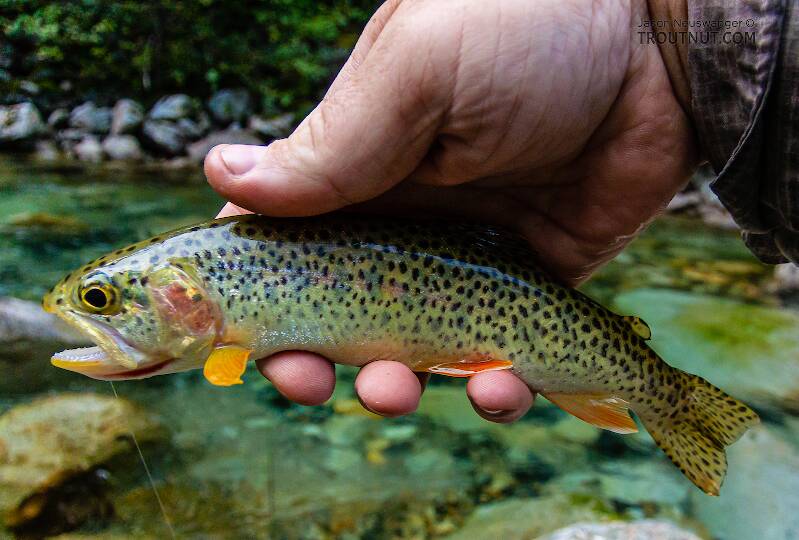
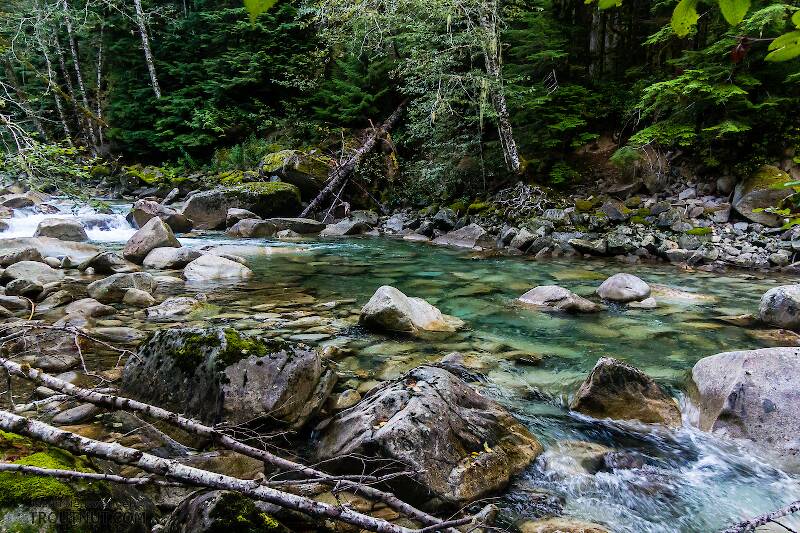
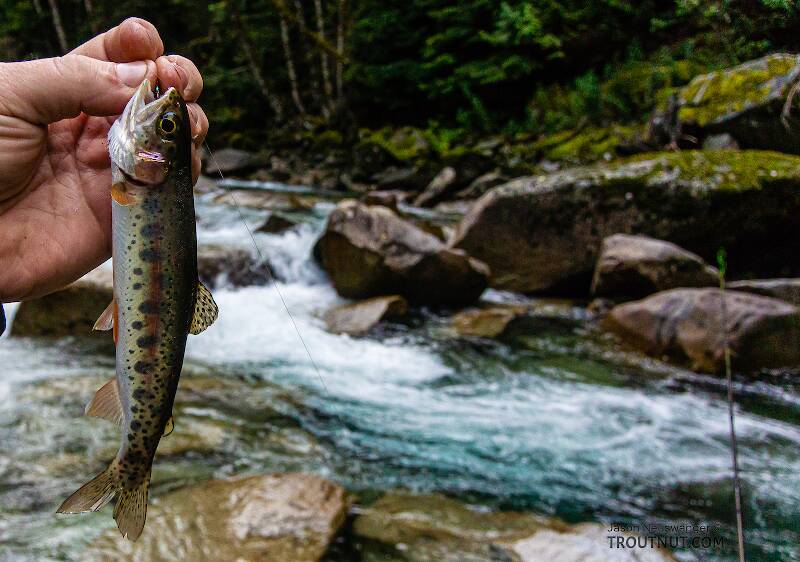

Quick evening on the upper Yakima
By Troutnut on September 16th, 2020
With smoke from the west coast wildfires beginning to clear just a little, I took a few hours to fish one of the nearest access points on the Yakima River, where the fish are small and the water uncrowded. There were some stoneflies and caddisflies in the air--I collected one of each, representing the most abundant species--but there weren't enough bugs on the water to get the fish rising, except for the abundant 3-inch-long Chinook Salmon parr. I continued playing around with my new Euro nymphing rig and landed several rainbows up to 12", including my first double on that rod.
Photos by Troutnut from the Yakima River in Washington
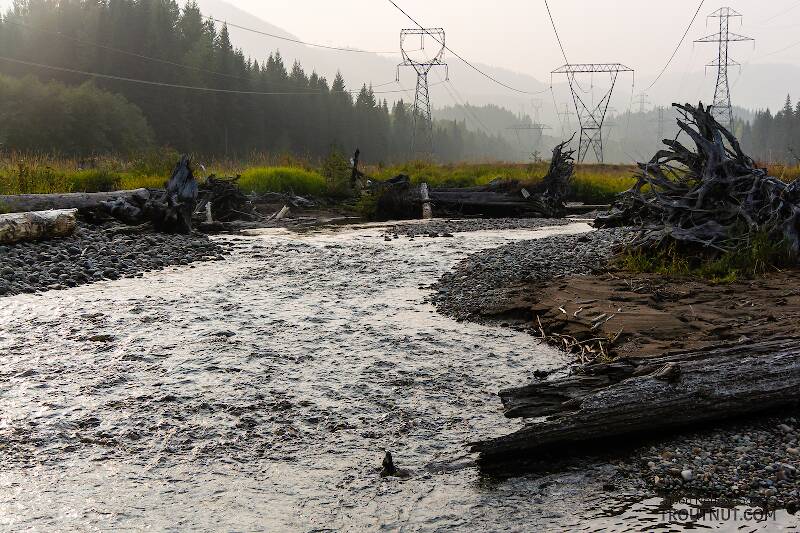
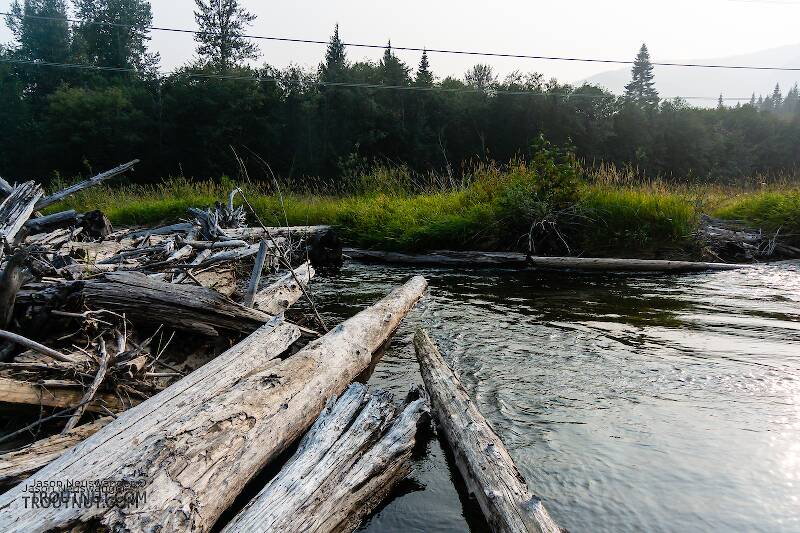
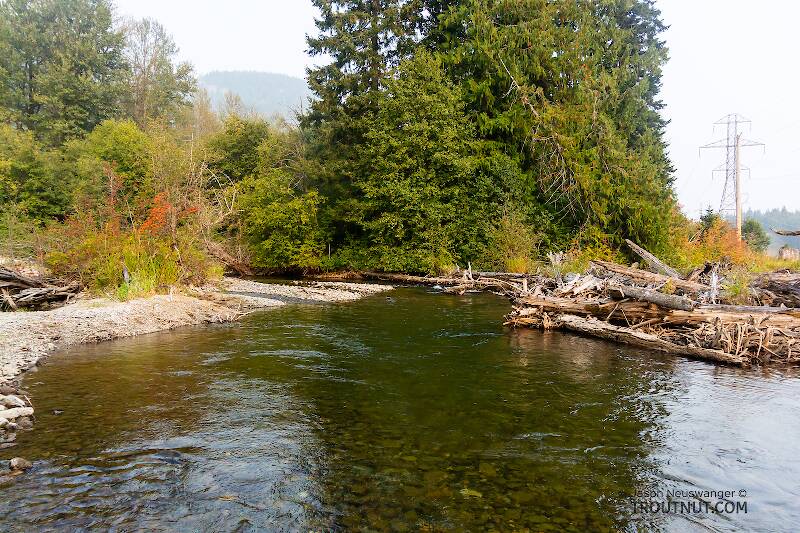
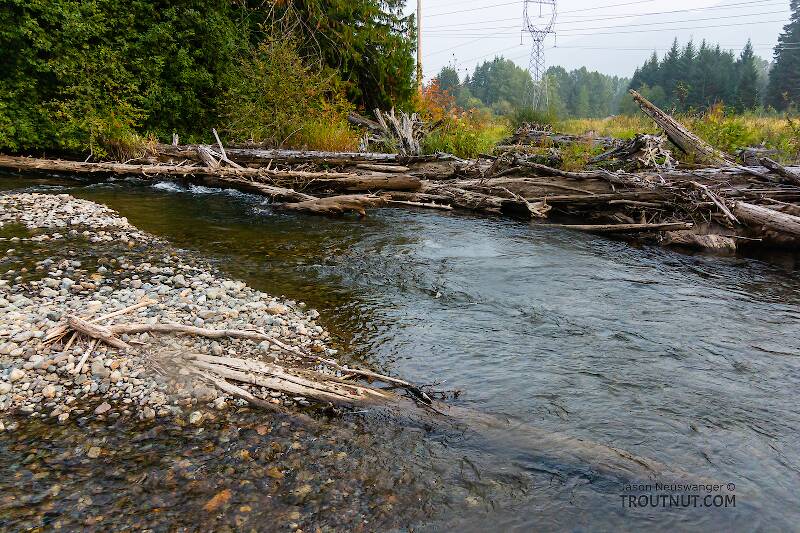
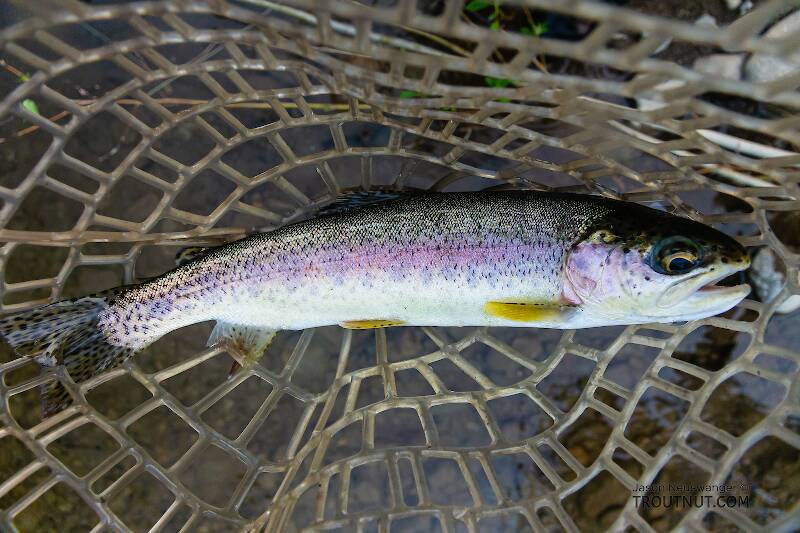
Closeup insects by Troutnut from the Yakima River in Washington
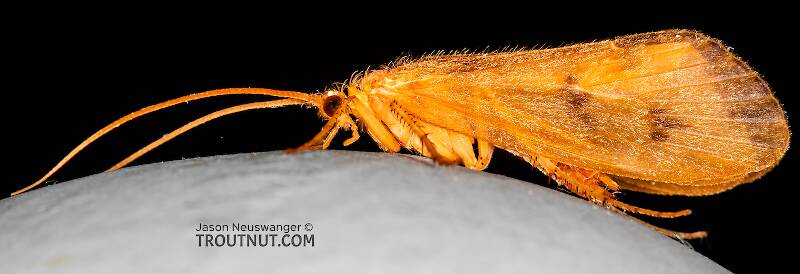
I first just assumed this was Dicosmoecus based on anglers' conventional wisdom since it's a large orange "October caddis," but Creno set me straight. I should have keyed it out. After another look under the microscope, it lacks an anepisternal wart on the mesopleuron, which rules out Dicosmoecus. The midtibiae have 2 apical spurs and 1 pre-apical spur, and from there the color pattern of the wing points to Onocosmoecus. The location then narrows the species to unicolor.
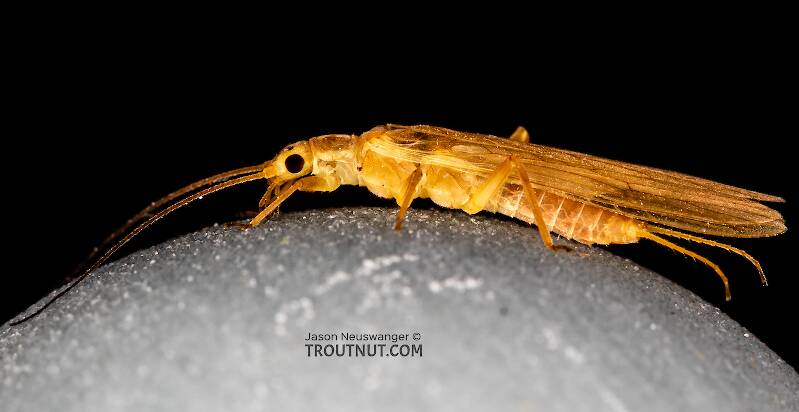
The family ID on this one was a little bit tricky. Just going by the size, shape, and color, it looks like Chloroperlidae. However, the second anal vein of the forewing is does not appear to be forked, and the apical maxillary palpal segment is close to the length of the penultimate segment, both of which rule out that family. The position of the cubitoanal crossvein relative to the anal cell in the forewing -- touching it in this case -- indicates Perlidae (and it really doesn't have the "look" of Perlidae at all), but other characteristics, such as the metathorastic sternacostal sutures and lack of gill remnants, point to Perlodidae. That's the right answer. Moving on to Perlodidae, the key characteristics in Merritt & Cummins lead straightforwarly to Isoperla, and the species key in Jewett 1959 (The Stoneflies of the Pacific Northwest) leads to Isoperla fusca.
There is one caveat: That source does suggest a May-July emergence, whereas this one was collected in mid-September.
There is one caveat: That source does suggest a May-July emergence, whereas this one was collected in mid-September.
Smoky float down the Yakima Canyon
By Troutnut on September 11th, 2020
With limited weekends remaining for fishing before October gets really busy, my wife and I braved the smoke to float the Yakima Canyon from mile 20 down to Red's. We found very few steadily rising fish, just small ones sipping Baetid duns in a couple of spots, and picked up some rainbows up to 14" on miscellaneous attractor dries and nymphs. I've never seen so many deer along the canyon, perhaps a consequence of the fire burning out much of the adjacent habitat and feed a few weeks ago.
I did a fairly poor job of budgeting our time, stopping at every likely-looking seam early in the float and then having to blow through some of the best water in a rush to reach the landing before it was too dark to see. That's what I get for not learning the river yet. There were some nicer fish feeding at dusk and I missed a couple strikes, but I didn't have time to stick around and keep working on them.
I did a fairly poor job of budgeting our time, stopping at every likely-looking seam early in the float and then having to blow through some of the best water in a rush to reach the landing before it was too dark to see. That's what I get for not learning the river yet. There were some nicer fish feeding at dusk and I missed a couple strikes, but I didn't have time to stick around and keep working on them.
Photos by Troutnut from the Yakima River in Washington
